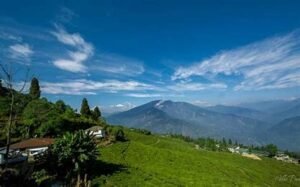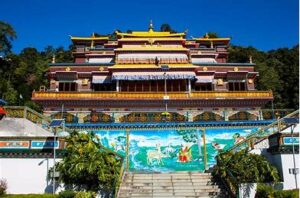Si-Donyi is an important agricultural festival celebrated by the Tagin tribe of Arunachal Pradesh, a state in the northeastern part of India. The festival honors nature and agricultural practices, recognizing the bond between the community, the earth, and the gods. Held annually in the month of February or March, Si-Donyi is not only a time for harvest but also a moment of spiritual reflection, prayers, and unity. It signifies the beginning of the harvest season and brings the community together to express gratitude for nature’s blessings.
Historical Roots: A Deep Cultural Connection
The Tagin tribe has a rich history, deeply rooted in the traditions of agriculture and animistic beliefs. They believe that their ancestors were gifted the knowledge of farming by the spirits of nature. The Si-Donyi festival marks the successful harvest of rice and other crops, which are essential to the tribe’s sustenance. Historically, the festival has served as a way to reinforce the tribe’s connection to their ancestors, as well as their respect for the environment and the forces that govern nature.
The name “Si-Donyi” comes from two words: “Si” meaning Sun and “Donyi” meaning Moon. These celestial bodies are revered by the Tagin tribe for their vital role in sustaining life. The festival honors both the Sun and the Moon, and it is believed that they are key to the fertility of the earth and the success of the harvest.
Language and Communication: The Voice of the Tribe
Language is an essential element of the Tagin tribe’s identity, and it plays a crucial role during the Si-Donyi festival. The Tagin people speak the Tagin language, which belongs to the Sino-Tibetan language family. During the festival, the tribe communicates through songs, dances, and rituals that are passed down from generation to generation. Traditional chants and prayers are recited, invoking blessings for a good harvest and the well-being of the community.
The festival is also a time for storytelling, where elders pass down the history and myths of the Tagin people. These stories emphasize the importance of respecting nature, living in harmony with the environment, and maintaining strong community ties. Through these oral traditions, the tribe ensures that their cultural heritage is preserved and carried forward.
Festivals and Celebrations: Unity Through Rituals
Si-Donyi is a grand festival that brings together the Tagin community in celebration. It begins with the preparation of offerings to the deities, which include food items such as rice, millet, and locally grown vegetables. The offerings are made in honor of the Sun, the Moon, and the spirits that protect the crops. During the festival, people gather in a central place, usually near a sacred tree or a community hall, to perform rituals and sacrifices.
The highlight of the festival is the traditional dance and music. Men and women, dressed in their finest attire, participate in lively dances that symbolize the agricultural cycles of planting, nurturing, and harvesting crops. The dances are accompanied by drums, bamboo flutes, and other traditional instruments. The music and dance are not only expressions of joy but also a way of seeking blessings for the future.
In addition to dance and music, the festival also includes feasting. Families come together to share food, strengthening social bonds and reinforcing the sense of community. Si-Donyi is a time for renewal, reflection, and connection with both the divine and the natural world.
Arts, Crafts, and Music: Creative Expressions of Tradition
The Si-Donyi festival showcases the artistic talents of the Tagin people. Traditional crafts such as weaving, pottery, and wood carving are often displayed during the event. The Tagin women are skilled weavers, and they create beautiful fabrics used for making traditional clothing. The intricate patterns and designs on their woven textiles reflect the tribe’s connection to the natural world, incorporating motifs of plants, animals, and celestial bodies.
Music is also an integral part of the Si-Donyi festival. The Tagin people have a rich tradition of folk music, which is passed down through generations. The drums, bamboo flutes, and other instruments used in the festival are crafted by local artisans. The rhythms and melodies create a sense of unity and celebrate the cycle of life, agriculture, and nature. The music and dance are deeply intertwined with the tribe’s spiritual beliefs and cultural identity.
Cuisine and Culinary Traditions: A Taste of the Land
Food plays a central role in the Si-Donyi festival. The Tagin people are known for their simple yet flavorful cuisine, which is based on locally grown ingredients. During the festival, families prepare a variety of dishes, showcasing their agricultural produce. Rice, millet, vegetables, and meat from locally raised animals are the main components of their meals.
One of the special dishes served during Si-Donyi is “Apong,” a traditional rice beer that is brewed during the festival. Apong is consumed as part of the celebrations, symbolizing the community’s appreciation for the harvest and the spiritual connection to the earth. It is often shared among friends and family, fostering a sense of togetherness and camaraderie.
The food shared during Si-Donyi not only nourishes the body but also strengthens the community. It serves as a reminder of the importance of sustenance and the deep bond between the people, their land, and the harvest.
Attire and Ornamentation: Dressing for the Occasion
During Si-Donyi, the Tagin people wear their traditional attire, which is an important expression of their cultural identity. The clothing is often handmade, with intricate embroidery and weaving patterns that reflect the tribe’s artistic heritage. The women wear colorful shawls and skirts, while the men typically wear loincloths and headgear made from feathers and beads.
The Tagin people also wear various ornaments, such as necklaces, earrings, and armlets made from locally sourced materials like bone, wood, and beads. These ornaments are not only decorative but also serve as symbols of status, strength, and connection to the natural world.
Beliefs and Values: Harmony with Nature
The Si-Donyi festival is deeply connected to the spiritual beliefs of the Tagin tribe. The tribe follows animistic beliefs, which hold that nature is inhabited by spirits that govern the forces of the earth, the sky, and the elements. The Sun and the Moon are seen as powerful deities that control the cycles of life and agriculture. During Si-Donyi, the community offers prayers and sacrifices to these deities, asking for blessings on the crops and the well-being of the people.
The festival also reinforces the values of community, respect for elders, and gratitude for the gifts of nature. It is a reminder that the Tagin people must live in harmony with the land and the environment, nurturing the earth to ensure the continued success of their crops and livelihood.
Customs and Etiquette: A Celebration of Respect
The customs and etiquette of Si-Donyi reflect the Tagin tribe’s commitment to respect, unity, and tradition. During the festival, there are specific rituals that must be followed, such as offering prayers before meals, performing dances in a particular order, and wearing the proper attire. Elders play a central role in guiding the younger generation, passing down knowledge and ensuring that the customs are upheld.
The festival is also a time for reconciliation and healing. Disputes or conflicts that may have arisen during the year are often resolved during Si-Donyi, allowing the community to start the new year with peace and harmony.
Interactions with Nature: A Deep Bond with the Earth
The Tagin tribe’s relationship with nature is central to their way of life. Si-Donyi highlights this deep connection, as the festival honors the land, the crops, and the spirits that sustain the community. The Tagin people have a sustainable approach to agriculture, using traditional farming techniques that are in harmony with the environment. They practice shifting cultivation, also known as “jhum,” which involves rotating crops to maintain soil fertility.
The festival is an opportunity for the Tagin people to express their gratitude to the land for its bounty and to ensure that future generations will continue to live in harmony with nature. By celebrating Si-Donyi, the tribe reinforces its commitment to protecting the environment and preserving its agricultural heritage.
Challenges and Preservation: Protecting Tradition in a Changing World
While Si-Donyi remains an important tradition, the Tagin tribe faces challenges in preserving their culture and way of life. Modernization, deforestation, and changes in agricultural practices pose threats to the traditional customs and the environment. The younger generation is increasingly moving to urban areas, and there is a growing need to ensure that the cultural practices associated with Si-Donyi are passed down.
Efforts are being made to document and preserve the festival’s rituals, music, and dances, but it is essential for the community to actively participate in the preservation of their heritage. Awareness campaigns, cultural education, and support for traditional farming practices can help safeguard the future of Si-Donyi and the Tagin tribe’s unique cultural identity.
What Has This Culture Contributed to the Broader Region or World?
The Tagin tribe’s Si-Donyi festival has contributed to the cultural richness of Arunachal Pradesh and India. Its agricultural practices, music, art, and oral traditions have added to the diverse cultural tapestry of the region. The emphasis on sustainability and harmony with nature offers valuable lessons in environmental stewardship, which are relevant to the modern world.
Si-Donyi also represents the resilience of indigenous cultures in the face of modernization. It serves as a reminder of the importance of preserving traditional practices and knowledge for future generations.
Connection to Northeast India
Si-Donyi is just one of many festivals in Northeast India that celebrate the rich diversity of indigenous cultures. The region is known for its vibrant traditions, unique languages, and strong connection to nature. The Tagin tribe’s celebration of Si-Donyi adds to the cultural mosaic of the area, highlighting the importance of community, spirituality, and agricultural life in the northeast.
Conclusion
Si-Donyi is more than just a festival; it is a celebration of life, nature, and tradition. As we learn about the agricultural practices, customs, and values of the Tagin tribe, let us remember the importance of preserving these traditions for future generations. It is essential that we continue to support the efforts to protect indigenous cultures and their ways of life.
In conclusion, Si-Donyi is a testament to the resilience of the Tagin tribe and their deep connection to nature. It offers valuable lessons in sustainability, community, and respect for the environment, making it a festival worth celebrating and preserving for generations to come.




